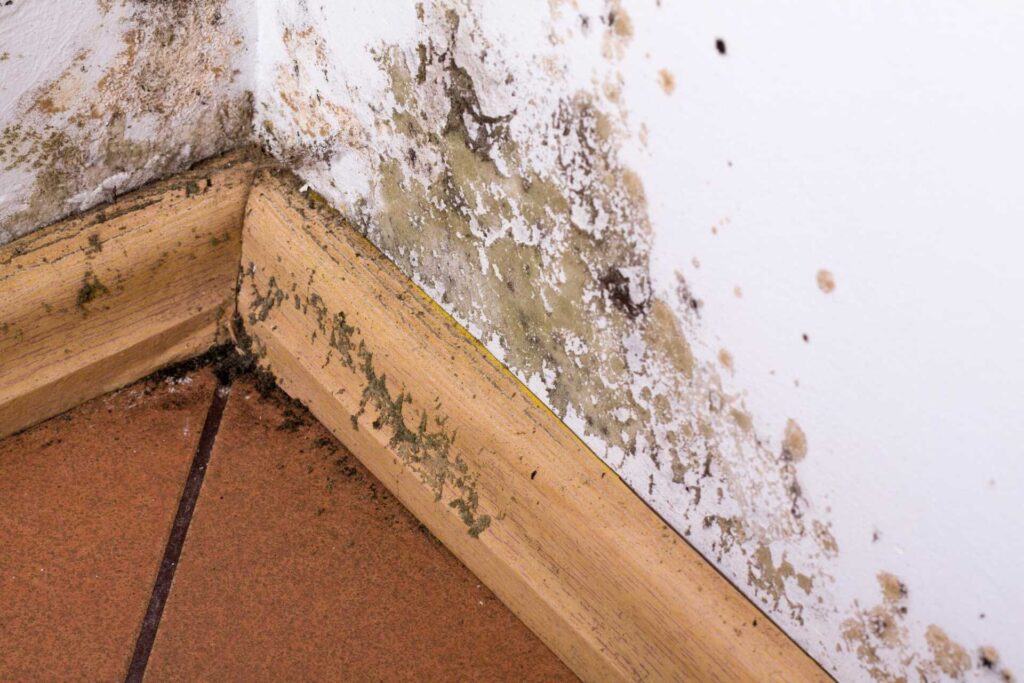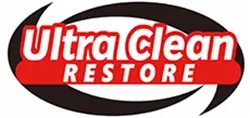
Contents
Imagine discovering mold in your basement after a heavy rainstorm. It’s essential to tackle this issue promptly and effectively to prevent health risks and further damage. By following trusted steps for mold remediation, you can ensure a thorough response. From evaluating the extent of the infestation to implementing safety precautions, each step is critical in creating a healthier environment. Understanding these processes can make all the difference in your remediation efforts.
Key Takeaways
- Conduct a thorough visual inspection and use moisture meters to identify mold presence and affected areas promptly.
- Wear appropriate personal protective equipment (PPE) to ensure safety during the remediation process.
- Remove contaminated materials, seal them in plastic bags, and dispose of them at certified facilities.
- Use dehumidifiers and high-capacity fans to dry out affected areas and maintain humidity below 60%.
- Implement ongoing monitoring and regular inspections to prevent future mold growth and ensure effective moisture management.
Understanding Mold Growth After Water Damage
When water damage occurs, understanding mold growth becomes essential for effective remediation. Mold thrives in environments with excess moisture, making it important to identify and eliminate moisture sources promptly.
You’ll find mold spores in the air, and they can settle on damp surfaces, leading to rapid growth. Common moisture sources include leaks, flooding, and high humidity levels.
To mitigate mold growth, ensure that areas affected by water damage are dried thoroughly within 24 to 48 hours. This includes checking hidden spaces, like behind walls and under floors.
Use dehumidifiers and proper ventilation to maintain low humidity levels, which discourages mold proliferation. Remember, mold can pose health risks, so wearing appropriate personal protective equipment (PPE) during cleanup is essential.
Assessing the Scope of Mold Infestation
To effectively tackle mold remediation, you must first evaluate the scope of the infestation. Start by employing mold identification techniques, such as visual inspections and moisture meter readings, to determine the extent of mold presence in your space. Look for areas with visible mold growth, water damage, or heightened humidity levels.
Next, utilize evaluation tools like air sampling kits and surface swabs to measure mold spores in the air and on surfaces. These tools help quantify the severity of the infestation and identify specific mold species, which can inform your remediation approach.
Don’t forget to document your findings, as this will be essential for planning and communicating with professionals.
Always prioritize safety by wearing personal protective equipment during your evaluation. By thoroughly evaluating the scope of the infestation, you lay a solid foundation for effective mold remediation and protect your environment from further harm.
Gathering Necessary Equipment and Supplies
Gathering the right equipment and supplies is essential for effective mold remediation.
Having the proper tools streamlines the process and ensures that you’re following mold-prevention strategies that protect your home and your loved ones.
Here’s an equipment checklist to help you get started:
- Personal Protective Equipment (PPE): Masks, gloves, and goggles to safeguard yourself.
- Mold Removal Solutions: Effective cleaners to eliminate mold effectively.
- Dehumidifier: To reduce moisture levels, preventing future growth.
- Negative Air Pressure Machine: Helps contain mold spores during the remediation process.
Ensuring Safety Precautions During Remediation
When tackling mold remediation, you must prioritize safety by using appropriate personal protective equipment (PPE) like gloves, masks, and goggles.
Ensuring proper ventilation and containment is essential to prevent mold spores from spreading during the process.
Personal Protective Equipment
One essential aspect of mold remediation is wearing the right personal protective equipment (PPE) to safeguard your health.
By following safety protocols, you can ensure a safer remediation process for yourself and others. Here’s what you should wear:
- N95 respirator: Protects your lungs from harmful spores.
- Gloves: Prevents skin contact with irritants and allergens.
- Goggles: Shields your eyes from mold particles and chemicals.
- Protective suit: Minimizes exposure to mold and contaminants.
Using proper protective gear isn’t just about your safety; it’s about creating a secure environment for everyone involved.
Remember, when you prioritize your well-being, you foster a sense of belonging and responsibility within your community.
Stay safe and diligent during the remediation process!
Ventilation and Containment
To effectively manage mold remediation, ensuring proper ventilation and containment is vital for minimizing exposure to harmful spores.
Implementing effective ventilation strategies is imperative; use exhaust fans to promote air circulation and direct contaminated air outside. Seal off affected areas with plastic sheeting to contain spores and prevent cross-contamination.
Make sure to create negative pressure within the workspace to keep spores from escaping. Additionally, use air scrubbers equipped with HEPA filters to purify the air and ensure a safer environment.
Regularly monitor air quality during the process, and maintain communication with your team to foster a sense of belonging and shared responsibility.
Containing the Affected Area
As you begin the mold remediation process, it’s vital to contain the affected area to prevent spores from spreading throughout your home. By implementing effective barriers and sealing techniques, you can ensure a safer environment for yourself and your loved ones.
Consider these steps to effectively contain the area:
- Use plastic sheeting to create barriers around the affected zone.
- Seal all vents and doorways with tape to limit airflow.
- Maintain negative air pressure to keep spores from escaping.
- Wear protective gear to safeguard against exposure during the process.
These precautions protect your home and foster a sense of belonging and security.
Remember, a well-contained area is fundamental for successful remediation, allowing you to reclaim your space and peace of mind.
Taking these steps ensures you’re doing everything possible to keep your family safe and healthy.
Removing Contaminated Materials
Once you’ve contained the affected area, it’s essential to identify all contaminated materials that need removal.
Use proper disposal techniques to ensure safety and prevent further spread of mold spores.
Always wear appropriate protective gear during this process to minimize health risks.
Identify Affected Areas
Identifying affected areas is essential for effective mold remediation, and you’ll need to carefully assess your environment to remove contaminated materials.
Utilize mold detection techniques to pinpoint problem areas and ensure thorough affected surface identification.
Start by focusing on:
Visible mold growth: Look for discoloration on walls and ceilings.
Water-damaged materials: Check for stains or soft spots.
Musty odors: Trust your senses; they often indicate hidden mold.
High humidity zones: Pay attention to bathrooms and basements.
Proper Disposal Techniques
When it comes to removing contaminated materials, following proper disposal techniques is crucial for ensuring safety and preventing mold spread. First, assess the materials affected by mold—items like drywall, carpets, and insulation may need to be discarded. Use sustainable disposal methods whenever possible to protect the environment. Always treat moldy materials as hazardous waste and seal them in plastic bags before disposal. This minimizes exposure risks.
| Action | Description |
|---|---|
| Identify Contaminated Areas | Recognize where mold is present |
| Seal Materials in Plastic | Prevents spore release during disposal |
| Dispose at Certified Facility | Ensures safe handling of hazardous waste |
| Document Disposal Process | Keeps records for safety compliance |
Cleaning and Disinfecting Surfaces
As you prepare to tackle mold remediation, cleaning, and disinfecting surfaces is essential to prevent further growth and secure a safe environment.
Utilizing eco-friendly products ensures effective surface treatment and protects your family and pets from harmful chemicals.
Here are some critical steps to follow:
- Assess all affected surfaces thoroughly.
- Use appropriate eco-friendly cleaners to eliminate mold spores.
- Scrub surfaces with brushes to ensure complete removal.
- Disinfect with a solution that kills the remaining spores.
Drying and Dehumidifying the Environment
To effectively prevent mold from returning, drying and dehumidifying the environment is vital after cleaning. Start by using high-capacity fans to circulate air and expedite the drying process.
Make certain that you target areas with lingering moisture, such as carpets, walls, and hidden corners. Employ dehumidifiers to maintain ideal humidity control, ideally below 60%. This step is essential for effective moisture management, as it creates an unfavorable environment for mold spores to thrive.
Monitor the humidity levels regularly with a hygrometer, adjusting your dehumidifiers as needed. If the space feels damp or musty, increase airflow and dehumidification efforts.
Consider sealing any leaks or addressing water sources that may contribute to moisture issues. By taking these steps, you’ll foster a healthier environment and reduce the risk of mold returning, ensuring your space remains a safe and welcoming place for everyone.
Monitoring for Future Mold Growth
Although you’ve taken essential steps to eliminate mold, ongoing monitoring is crucial to prevent its return.
Implementing effective mold monitoring techniques helps you stay ahead of future growth. Regular inspections and moisture assessments can ensure your home remains a safe haven for you and your loved ones.
Consider these proactive strategies:
- Install hygrometers to track humidity levels.
- Conduct routine visual inspections in damp areas.
- Utilize mold test kits to identify hidden infestations.
- Maintain good ventilation to promote airflow.
Wrap-Up
Effective mold remediation is essential for a safe environment. Just like a knight wouldn’t charge into battle unarmored, you shouldn’t tackle mold without proper precautions and equipment. Always assess the infestation thoroughly, remove contaminated materials, and ensure proper cleaning and drying. By maintaining low humidity and monitoring for future growth, you can protect your space and health. Remember, vigilance today prevents a moldy tomorrow.
Recent Posts
Why Choose Professional Mold Remediation Services?
Regarding mold issues, relying on professional mold remediation services can make a significant difference. Mold
7 Steps for Professional Mold Remediation
When it comes to mold remediation, understanding the process is essential for effective results. You’ll
Expert Mold Remediation After Water Damage
When water damage occurs, mold can quickly become a serious issue. You might not realize
